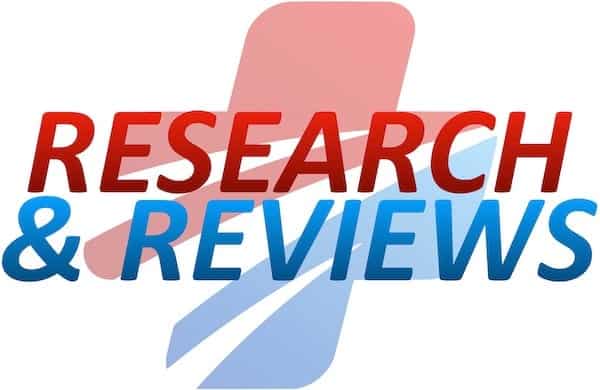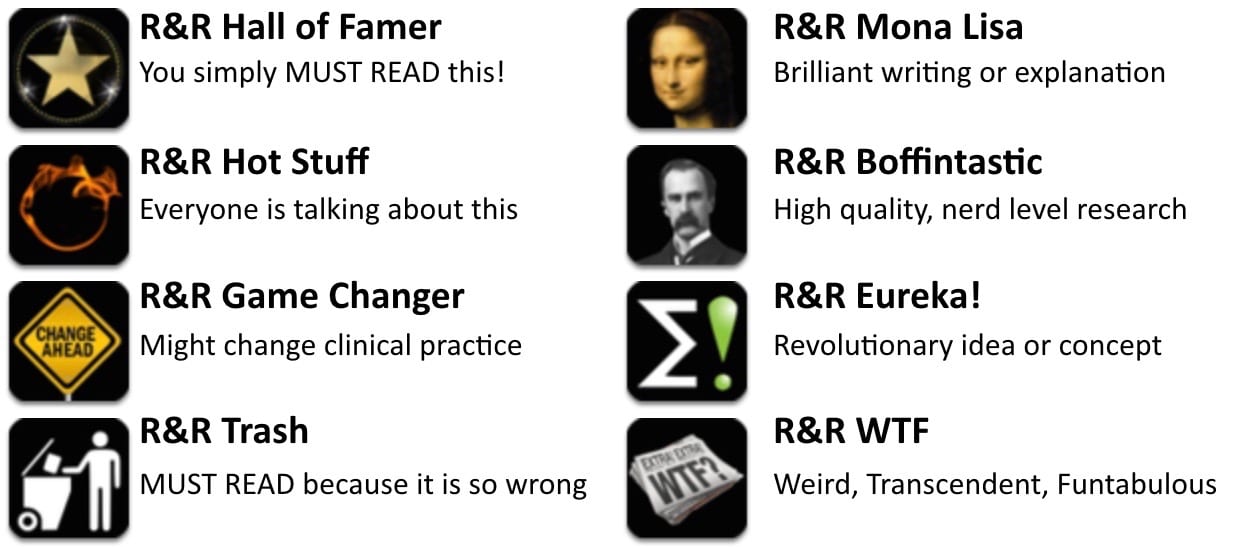R&R In The FASTLANE 163
Welcome to the 163rd edition of Research and Reviews in the Fastlane. R&R in the Fastlane is a free resource that harnesses the power of social media to allow some of the best and brightest emergency medicine and critical care clinicians from all over the world tell us what they think is worth reading from the published literature.
This edition contains 5 recommended reads. The R&R Editorial Team includes Jeremy Fried, Nudrat Rashid, Soren Rudolph, Anand Swaminathan and, of course, Chris Nickson. Find more R&R in the Fastlane reviews in the : Overview; Archives and Contributors
This Edition’s R&R Hall of Famer
van Merriënboer JJ, Sweller J. Cognitive load theory in health professional education: design principles and strategies. Medical education. 44(1):85-93. 2010. PMID: 20078759
- Cognitive Load Theory (CLT) is an example of how science can help us understand how we learn, and help us improve instructional design so that others can learn better. Central to the theory is that we each have a working memory of limited capacity. When we learn we fill up this working memory with 3 types of ‘cognitive load’. The first is intrinsic cognitive load (characteristic of what is being learned), the second is extraneous load (related to how the task is taught) and germane load (the load caused by the learning process in creating new cognitive schemas and integrating new information with old schemas). Based on this theory, an array of research-based principles for managing intrinsic load, decreasing extraneous load and optimising germane load have emerged. These are described in the article with practical tips that the medical teacher can use. Also of interest is the phenomenon of ‘expertise reversal’ – what works for novices may hinder the learning of experts… Learners and educators beware!
- Recommended by Chris Nickson
Sterling SA et al. The Impact of Timing of Antibiotics on Outcomes in Severe Sepsis and Septic Shock: A Systematic Review and Meta-Analysis. Critical care medicine. 43(9):1907-15. 2015. PMID: 26121073
- This systematic review and meta-analysis is further evidence that the administration of antibiotics < 3 hours after ED triage is NOT a predictor of better outcomes in patients with sepsis. This study found an OR of 1.16 (0.92-1.46) for mortality in the group that received antibiotics > 3 hours after triage. No one is arguing to withhold antibiotics from septic patients. Rather, we should avoid giving everyone antibiotics simply to meet a quality measure that isn’t based on data.
- Recommended by Anand Swaminathan
Ferguson I et al. Propofol or Ketofol for Procedural Sedation and Analgesia in Emergency Medicine-The POKER Study: A Randomized Double-Blind Clinical Trial. Annals of emergency medicine. 68(5):574-582.e1. 2016. PMID: 27460905
- We now have another study, this time a multicenter RTC, comparing propofol to 1:1 ketofol for ED procedural sedation. Similar to smaller previous studies, no difference was found in the primary outcome of adverse respiratory events requiring intervention. Authors did report an increased incidence of hypotension in the propofol group, however this did not appear to be clinically significant. Although ketofol yet again failed to emerge as superior to propofol alone, some interesting trends in secondary outcomes, including sedation and pain scores, as well as recovery time, warrant further study.
- Recommended by Meghan Spyres
Kaufman J et al. Quick-Wee: a novel non-invasive urine collection method. Emergency medicine journal : EMJ. 2016. PMID: 27565196
- I have been christened by all my children while changing diapers and have determined (via rigorous scientific methods) the probability of spontaneous infant urination is inversely correlated with the frumpiness of my clothing. I thought the way to make them urinate on demand was to simply wear a nice sport coat or suit. But these Aussie authors have proven me wrong. Using saline soaked gauze stimulation to the suprapubic area, 30% of infants voided, allowing a clean catch UA. This method is deemed Quick-Wee by the authors – a novel method to obtain urine in precontinent kids. This caution, I don’t think it can replace sterile catheter for the sepsis workup if the urine is captured in a bag applied to the perineum.
- Recommended by Clay Smith
- Read more: Obtain clean catch UA in infants quickly (EM Topics)
Tobias JD et al. Codeine: Time To Say “No”. Pediatrics. 2016. PMID: 27647717
- The FDA, Europeans Medicines Agency, American Academy of Pediatrics, and Health Canada have all issued warnings about the potential dangers of codeine. This paper covers the history of these warnings and the reported deaths. Even without the concern about super-metabolizers, we know codeine has no analgesic effect for some patients, and has never been shown to have any benefits over other formulations. In fact, in all the studies I am aware of, codeine has higher rates of side effects if you are trying to get to equianalgesic doses. I think the authors are probably correct in their assertion that we should be saying “no” to codeine.
- Recommended by Justin Morgenstern
Community emergency physician with a passion for education, evidence based medicine, and life, working in the Greater Toronto Area (that’s in Canada) | @First10EM | Website |





